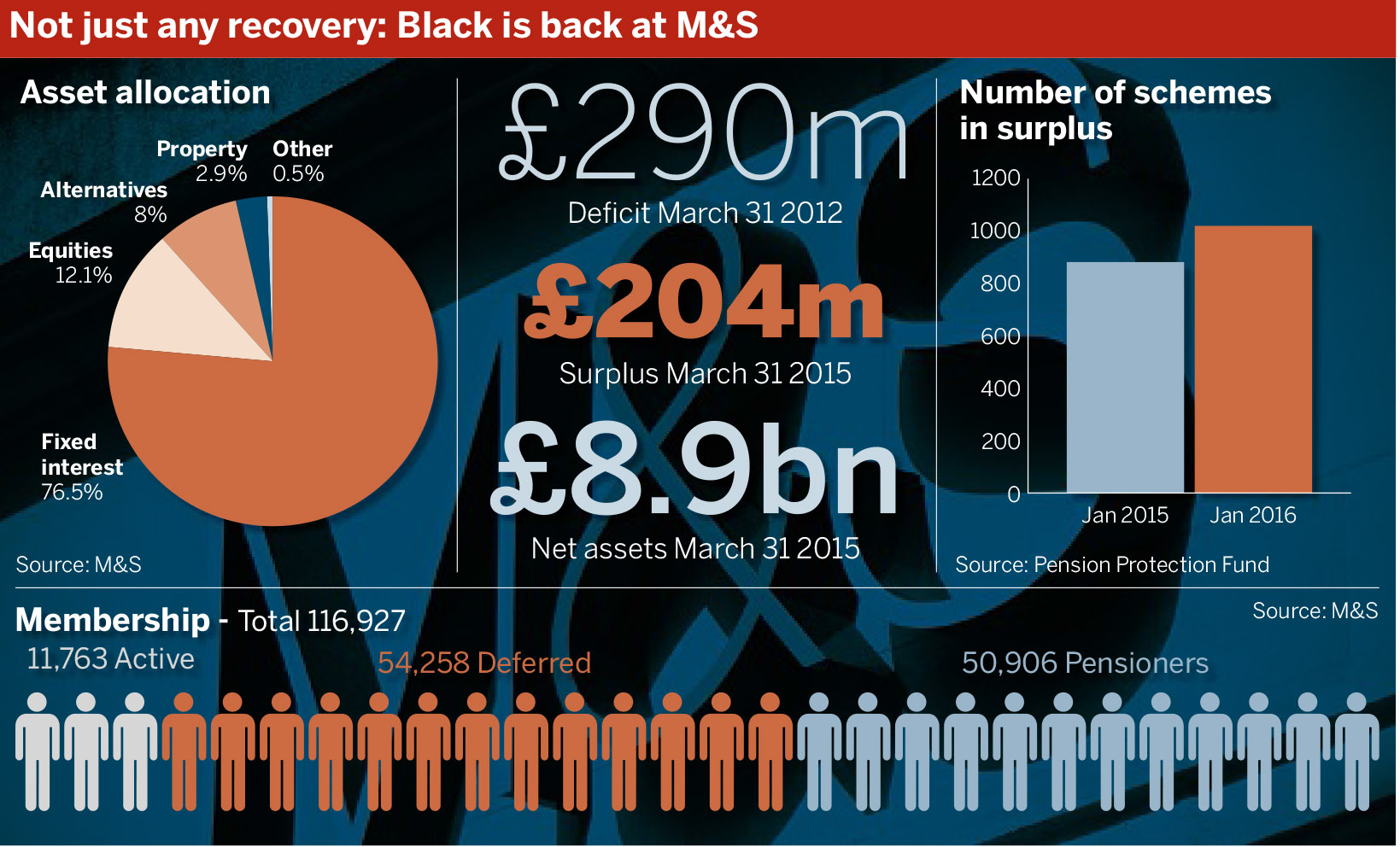M&S scheme in ample surplus as hedge pays off
The Marks and Spencer Pension Scheme has swung into surplus, thanks to a combination of outperformance of return-seeking assets and full hedging of interest rate risk, the company said last week.
The current market environment is making it difficult for defined benefit pension schemes to improve funding levels, but some are beginning to see their strategies pay off.
Earlier this month energy group BG announced a £205m surplus in its pension scheme following the sale of two liquid natural gas vessels. In 2013 the scheme’s funding level had languished at around 70 per cent.
In practice, the trend over the last three or four years has been to increase hedging more and more
M&S agreed the triennial valuation with trustees last week and said the scheme had a surplus of £204m at March 31 2015, up from a £290m deficit on the same date in 2012.
The company announcement said: “This is due to an outperformance of return-seeking assets over the period. The scheme has also been fully hedged for interest rate purposes and thus insulated from the effect of falling gilt rates.”
A spokesperson for the scheme said the hedging has been implemented slowly. “The scheme has been hedging for more than 10 years on a cumulative basis to the point that the scheme is now fully hedged for interest rates.”
The spokesperson added that the fund began applying a derisking strategy in 2012. It reviews its asset allocation against liabilities each year and gradually allocates towards lower-risk assets. The plan is due to extend until 2032 and has not been changed by the news of a surplus.
It is unclear if the sponsor will be able to recover any surplus from the scheme. When asked about the company’s ability to do so, the spokesperson said: “The position of the scheme will be subject to frequent review and any change would [be] reflected through the service costs.”
To hedge or not to hedge?
While the valuation shows promising results for the £8.9bn scheme, Simeon Willis, principal consultant at KPMG, said the economic environment has become more difficult for schemes since the valuation date.
“The end of March 2015 was a pretty favourable date for valuations relative to what’s happened since then. Deficits have tended to increase from the second half of 2015 onwards… For most schemes that will have deteriorated quite substantially.”
Some schemes had been reluctant to hedge interest rates because they were so low it was thought unlikely they would go any lower, but Willis said most schemes are now hedging.
“The majority of our clients have decided to hedge to some level and we’ve encouraged them more hedging is better. Where they’ve held off it’s because of their tactical view or the tactical view of their employer.”
Richard Murphy, partner at consultancy LCP, concurred: “In practice, the trend over the last three or four years has been to increase hedging more and more. Trustees are agreeing with employers.”
However, Calum Cooper, partner at consultancy Hymans Robertson, said defined benefit schemes still had a long way to go, with around £1tn of unhedged interest rate risk in UK private sector DB schemes.
He added that when deciding whether to hedge, it is important to weigh up which risks a scheme can see the greatest rewards from. The M&S scheme, he said, could have had “less conviction of being rewarded on rate risk [and] more on being rewarded by return-seeking assets”.


